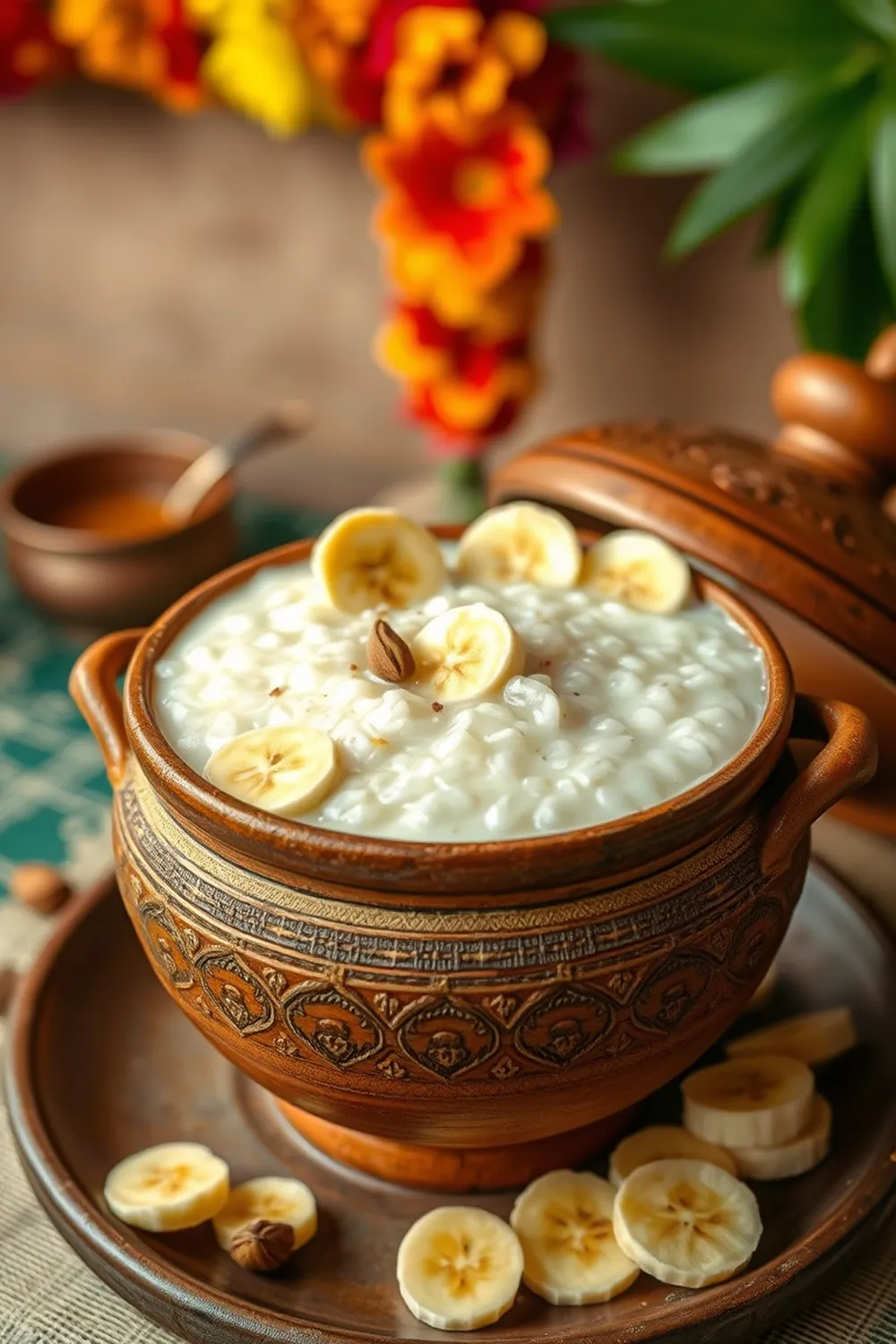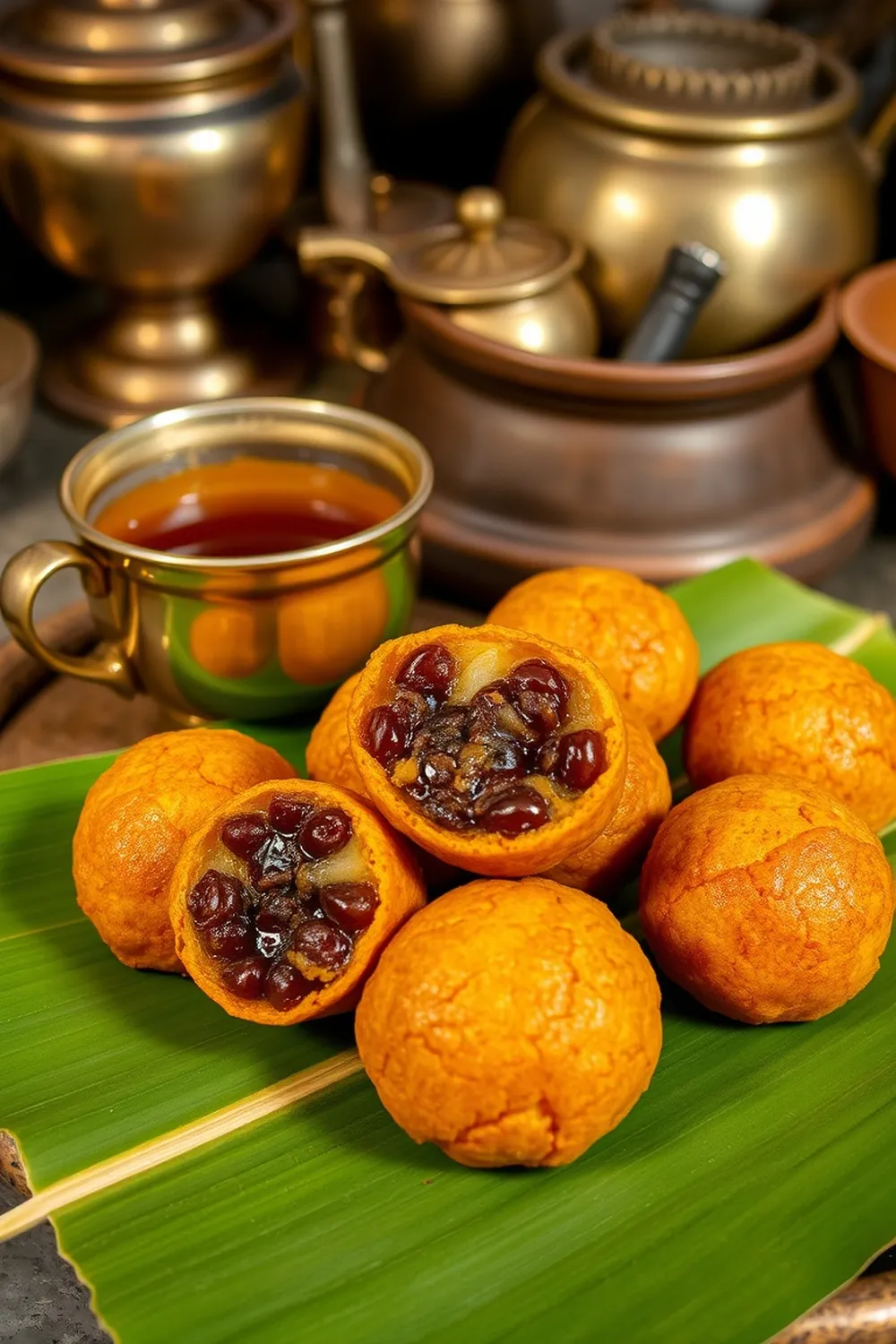- Prepare a maida (all-purpose flour) dough with water. Dissolve the dough in 3 cups of water to extract milk. Strain to remove gluten residue and rest overnight.
- Drain the water from the settled maida milk. Mix the milk with coconut milk and 1.25 cups of sugar in a non-stick kadai (wok).
- Caramelize 3/4 cup of sugar with 1 tsp of ghee until golden brown. Immediately stir into the halwa mixture.
- Add cashew pieces. Cook on medium-low heat for approximately 1 hour, stirring continuously until the halwa thickens.
- Stop cooking when the halwa releases oil from the edges. Transfer to a greased plate, flatten, and let cool completely.
- Cut into squares once cooled. Store in an airtight container for up to 3 days.
- Calories:280 kcal25%
- Energy:1171 kJ22%
- Protein:4 g28%
- Carbohydrates:45 mg40%
- Sugar:30 mg8%
- Salt:15 g25%
- Fat:8 g20%
Last Updated on 4 months by Neha Deshmukh
Authentic Maida Halwa Recipe – Coconut Milk & Cashew Delight
Introduction
Oh, halwa. Just the word conjures up warm, cozy feelings, doesn’t it? This Maida Halwa is a little different from the usual – it’s incredibly rich and creamy thanks to the coconut milk, and the cashew nuts add the perfect crunch. I first made this for a Diwali celebration, and it was an instant hit! It’s a bit of a labor of love, but trust me, every single stir is worth it. Let’s get started, shall we?
Why You’ll Love This Recipe
This isn’t your everyday halwa. It’s a delightful twist on a classic, offering a unique texture and flavor profile. The coconut milk lends a subtle sweetness and incredible smoothness, while the cashews provide a satisfying bite. It’s perfect for festive occasions, a special treat, or just when you’re craving something truly comforting. Plus, it keeps well for a few days (if it lasts that long!).
Ingredients
Here’s what you’ll need to create this magic:
- 1 cup maida (all-purpose flour) – about 120g
- 4 cups coconut milk – about 960ml
- 1.25 cups sugar – about 250g
- 0.75 cup sugar (for caramel) – about 150g
- 5 cashew nuts (broken)
- Few drops of ghee (for greasing)
Ingredient Notes
Let’s talk ingredients – a few little things can make a big difference!
Maida (All-Purpose Flour): Type and Quality
Using good quality maida is key. Look for a finely milled maida for the smoothest halwa. It’s the base of our dessert, so a good starting point is important!
Coconut Milk: Full-Fat vs. Low-Fat Options
I highly recommend full-fat coconut milk for this recipe. It really contributes to the richness and creamy texture. You can use low-fat if you prefer, but the halwa won’t be quite as decadent.
Sugar: Granulated vs. Other Varieties
Granulated sugar works best for both the halwa and the caramel. I wouldn’t recommend using powdered sugar, as it can affect the texture.
Ghee: Clarified Butter – Its Role in Flavor
Ghee adds a beautiful nutty aroma and flavor. It also helps prevent the halwa from sticking. A little goes a long way!
Cashew Nuts: Regional Preferences & Roasting
I like to use broken cashew pieces – they distribute better throughout the halwa. You can use whole cashews if you prefer, but you might want to roughly chop them. Lightly roasting the cashews before adding them enhances their flavor, but it’s not essential.
Step-By-Step Instructions
Alright, let’s get cooking!
- First, we need to prepare the maida dough. Mix the maida with enough water to form a soft, pliable dough. Dissolve this dough in 3 cups of water and let it sit. This process extracts the ‘milk’ from the maida.
- Let the mixture settle overnight. This is important! The next day, carefully drain the water, leaving behind the settled maida milk.
- Now, in a non-stick kadai (or a heavy-bottomed pan), combine the maida milk, coconut milk, and 1.25 cups of sugar.
- In a separate small pan, caramelize ¾ cup of sugar with a teaspoon of ghee until it turns a beautiful golden brown. Be careful – hot sugar is very hot!
- Immediately pour the caramelized sugar into the halwa mixture and stir well to combine.
- Add the cashew pieces.
- Now comes the workout! Cook on medium-low heat for about an hour, stirring constantly. This is where the magic happens, and your arm might get a little tired, but don’t give up!
- You’ll know it’s ready when the halwa starts to thicken and releases oil from the edges.
- Transfer the halwa to a greased plate, flatten it out, and let it cool completely.
- Once cooled, cut into squares and store in an airtight container.
Expert Tips
A few things I’ve learned over the years…
Achieving the Right Consistency
The halwa should be thick and creamy, but not dry. If it seems too thick, add a splash more coconut milk. If it’s too thin, continue cooking for a bit longer.
Preventing Halwa from Sticking
A good non-stick kadai is your best friend here. Also, stirring constantly is crucial! Don’t walk away, even for a minute.
The Importance of Continuous Stirring
Seriously, don’t stop stirring! It prevents sticking, ensures even cooking, and creates that lovely smooth texture.
Resting the Maida Dough – Why It Matters
Letting the maida dough rest overnight allows the starch to settle and the ‘milk’ to separate properly. It’s a key step for the right consistency.
Variations
Want to put your own spin on things?
Vegan Maida Halwa Adaptation
Simply substitute the ghee with a vegan butter alternative or coconut oil.
Gluten-Free Maida Halwa (Alternative Flours)
Maida isn’t gluten-free, of course! You can experiment with gluten-free flour blends, but the texture will be different. Rice flour might be a good starting point. My friend, Priya, swears by a mix of rice flour and almond flour.
Spice Level: Adding Cardamom or Saffron
A pinch of cardamom powder or a few strands of saffron will add a beautiful aroma and flavor. My grandmother always added a tiny bit of nutmeg!
Festival Adaptations: Special Occasion Halwa
For weddings or big celebrations, you can garnish with silver leaf (vark) for an extra touch of elegance.
Serving Suggestions
This halwa is delicious on its own, but you can also serve it with a scoop of vanilla ice cream or a sprinkle of chopped nuts. It’s lovely with a cup of chai!
Storage Instructions
Store the halwa in an airtight container at room temperature for up to 3 days. It can also be refrigerated for up to a week.
FAQs
Got questions? I’ve got answers!
What is Maida and is it healthy?
Maida is a refined wheat flour commonly used in Indian cooking. It’s not the healthiest option due to its low nutritional value, but it’s perfect for achieving the desired texture in this halwa.
Can I use store-bought maida milk instead of making it from scratch?
While you can find pre-made maida milk in some Indian grocery stores, I recommend making it from scratch for the best flavor and texture. It’s not difficult, and the results are worth it!
How do I know when the halwa is cooked perfectly?
The halwa is ready when it thickens considerably and starts to release oil from the edges. It should also have a beautiful golden-brown color.
What if my halwa is too dry or too wet?
If it’s too dry, add a splash of coconut milk. If it’s too wet, continue cooking for a bit longer, stirring constantly.
Can this halwa be made ahead of time?
Yes, you can make it a day or two in advance. Just store it in an airtight container and reheat gently before serving.










